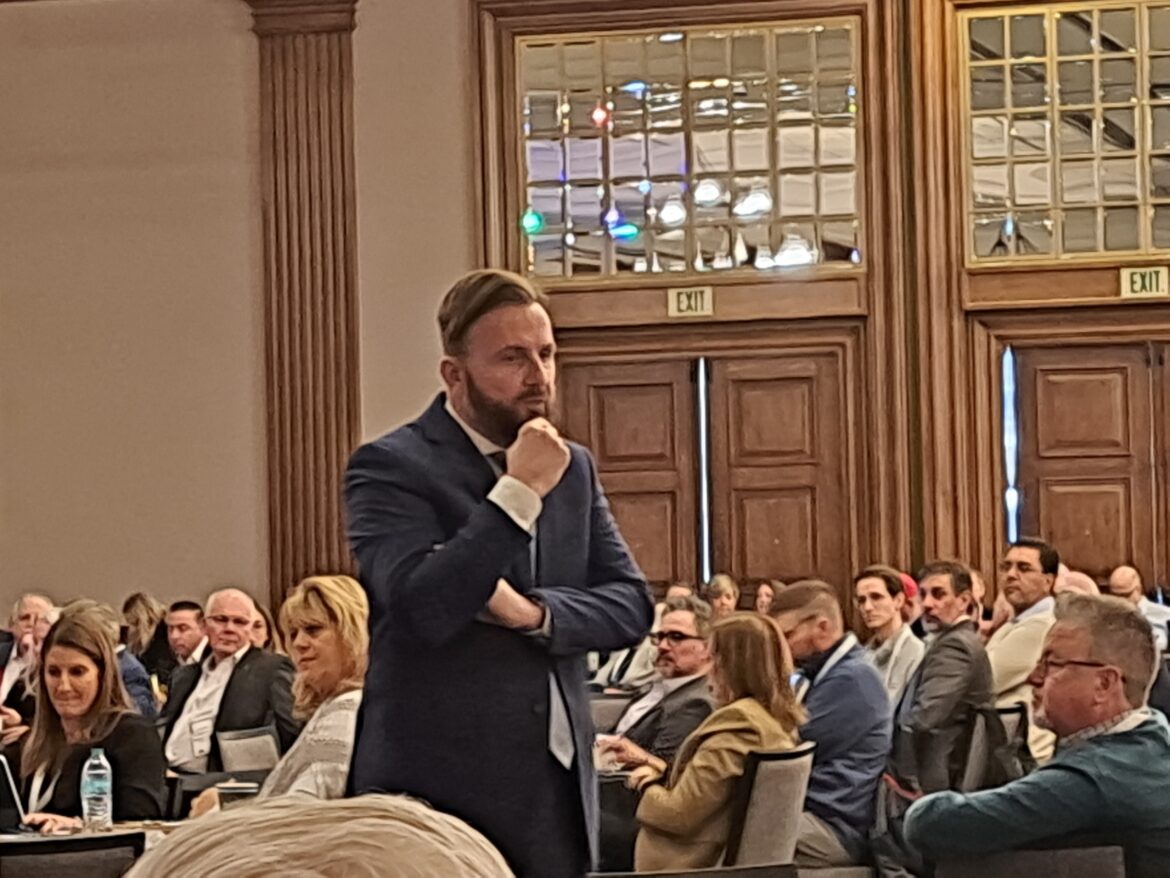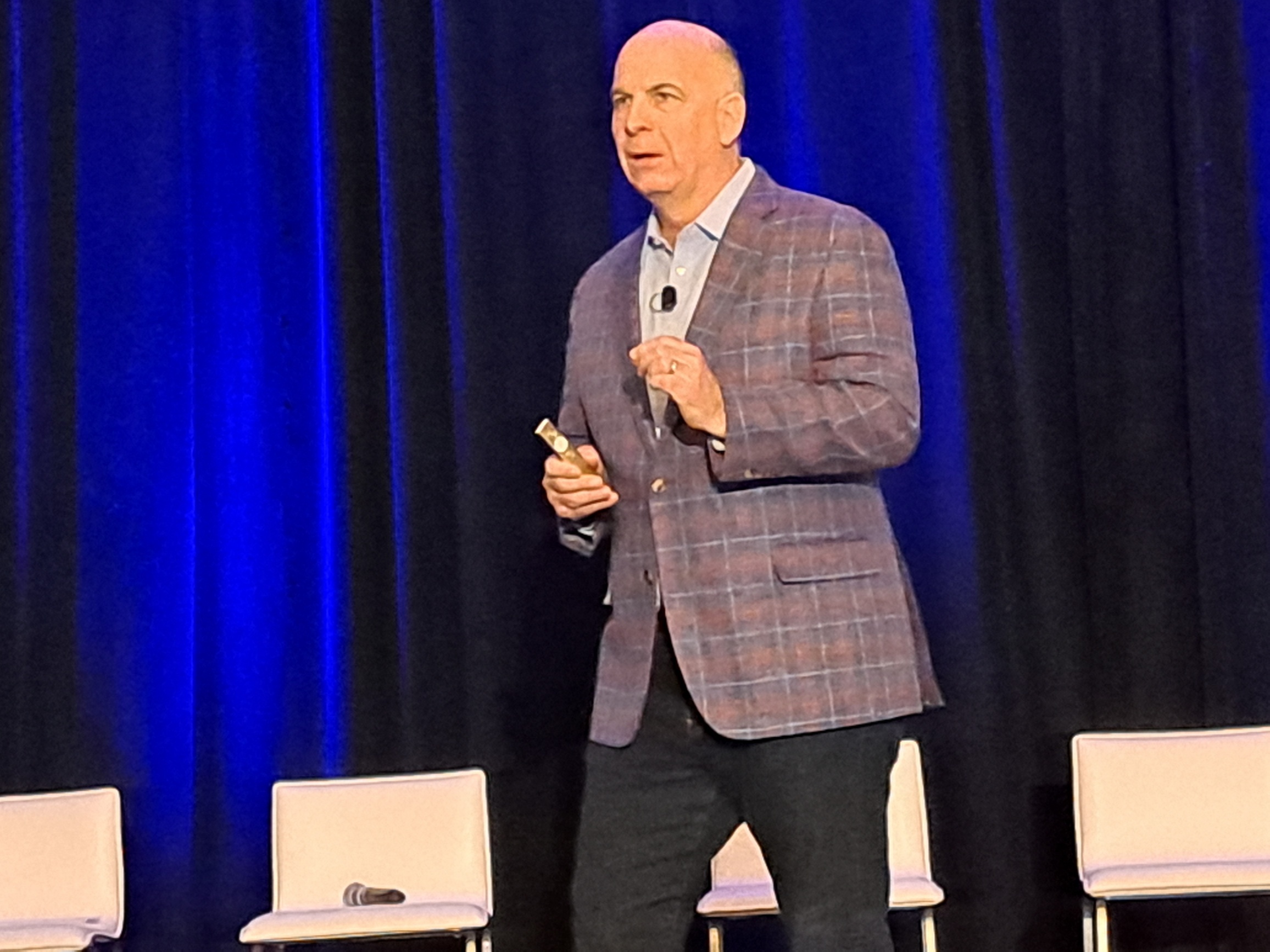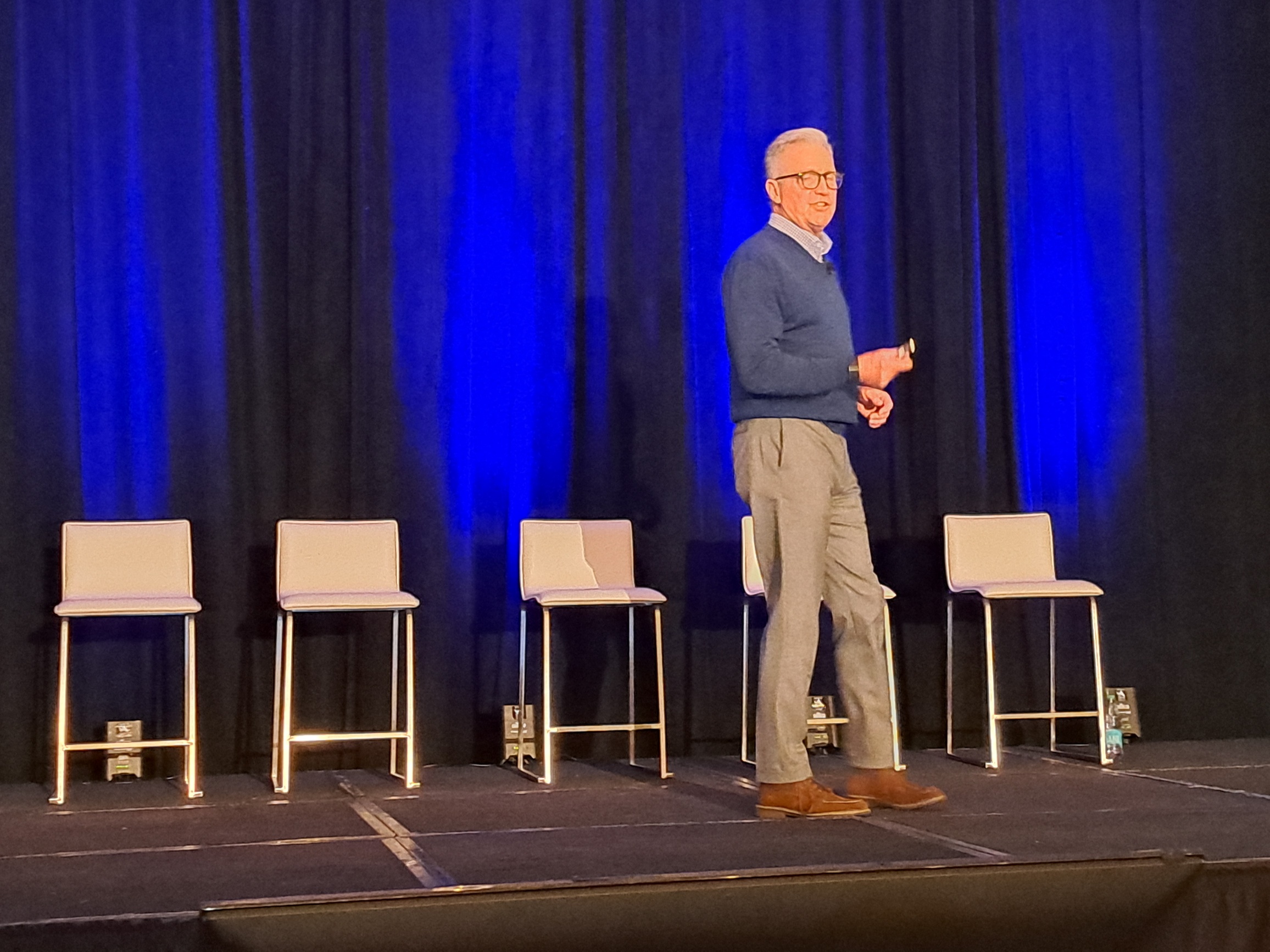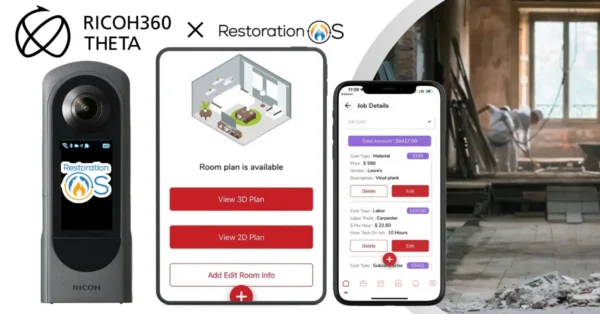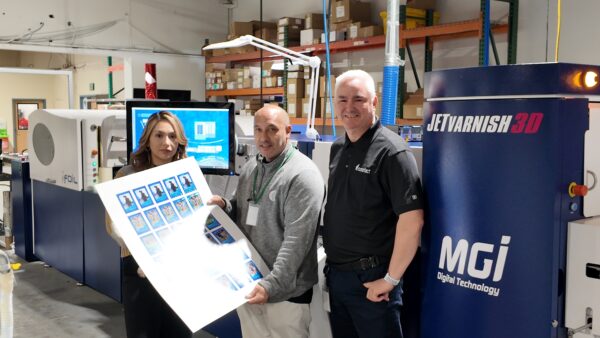Above: Sean Brehm of Spectral Capital’s discussion of quantum computing gave the audience something complex to think about.
What did you miss if you didn’t attend the Executive Connection Summit (ECS) in Scottsdale, Arizona, January 13-15? You would have missed more than 20 presentations, 54 different speakers/presenters, and a wealth of networking opportunities. The best way to describe the Executive Connection Summit for anyone who has never attended is one-part think tank, one-part educational forum, and one-part networking conference.
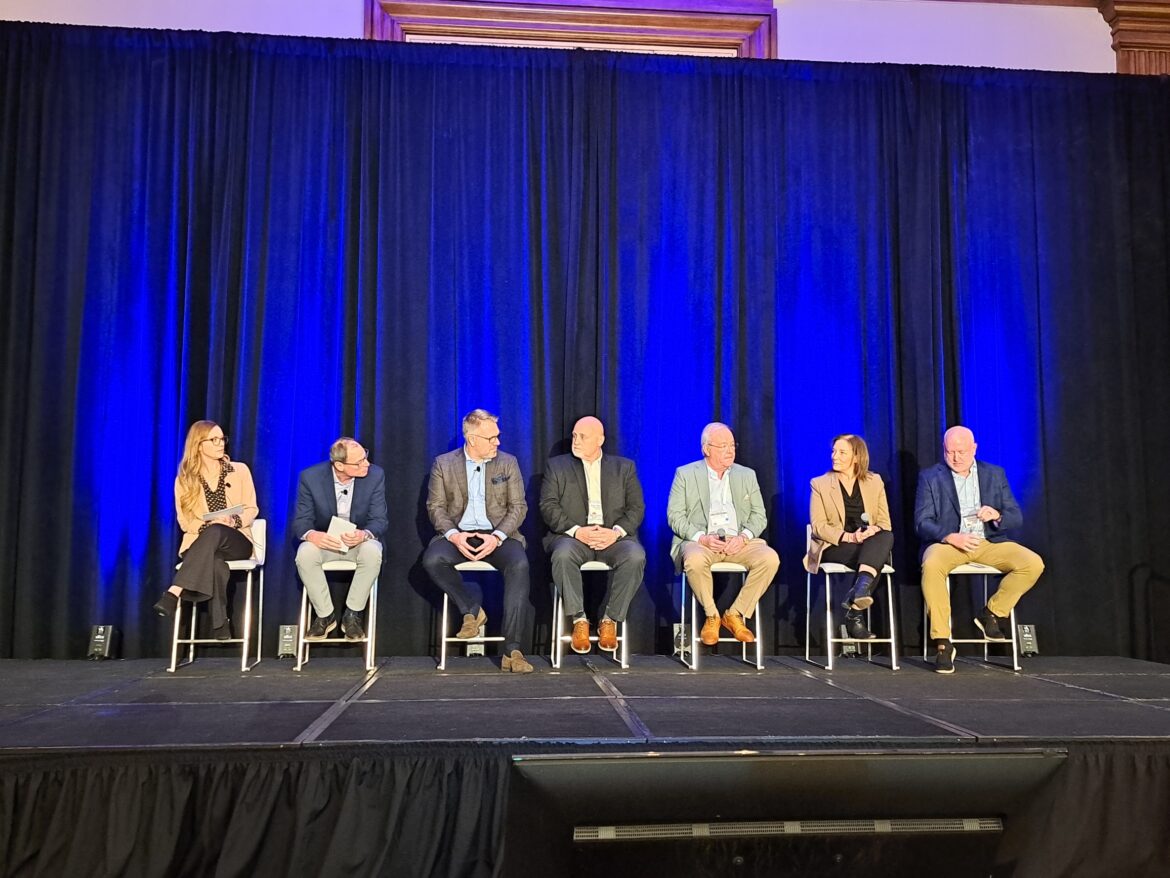
Sarah Custer of Distribution Management and panelists discuss the role of third-party distribution in the office technology industry.
The presentations offered a variety of perspectives and insights, with many highly informative and engaging. While a few leaned more toward promotional content and some were less impactful, every session had something valuable to offer. Even the most complex presentation—an exploration of quantum computing and data centers—challenged many in the audience with its technical depth but was nevertheless illuminating.
I guarantee that everyone who sat through that presentation is familiar with the term quantum computing, even if they didn’t comprehend the gist of the presentation and how it may impact them or their businesses in the future. No doubt the speaker, Sean Brehm of Spectral Capital, a deep quantum technology platform company, was way too smart for many of us in the audience. As a dealer sitting behind me quipped when Brehm asked if anybody remembered a specific point he made earlier in his presentation, “I sell copiers.”
That said, Earl Philpot, president of Precision Duplicating Solutions in London, Kentucky, told me afterward that one of his sons, attending the conference, was entranced by the presentation and couldn’t wait to talk with Brehm after the presentation.
Conversation Starter
I’d be rich if I had a dime whenever someone referenced artificial intelligence (AI) in a presentation or conversation during the Executive Connection Summit. Although only one Executive Connection Summit presentation was exclusively devoted to AI, AI was repeatedly discussed, particularly during presentations by Sam Errigo of Konica Minolta, Mike Marusic of Sharp, and Larry White of Toshiba. AI was also referenced during a fireside chat with Kirk Offel of Overwatch Mission Critical, a company that builds and staffs data centers; John Case of Acumatica, which offers a cloud-based ERP business management system; and Spectral Capital’s Brehm.
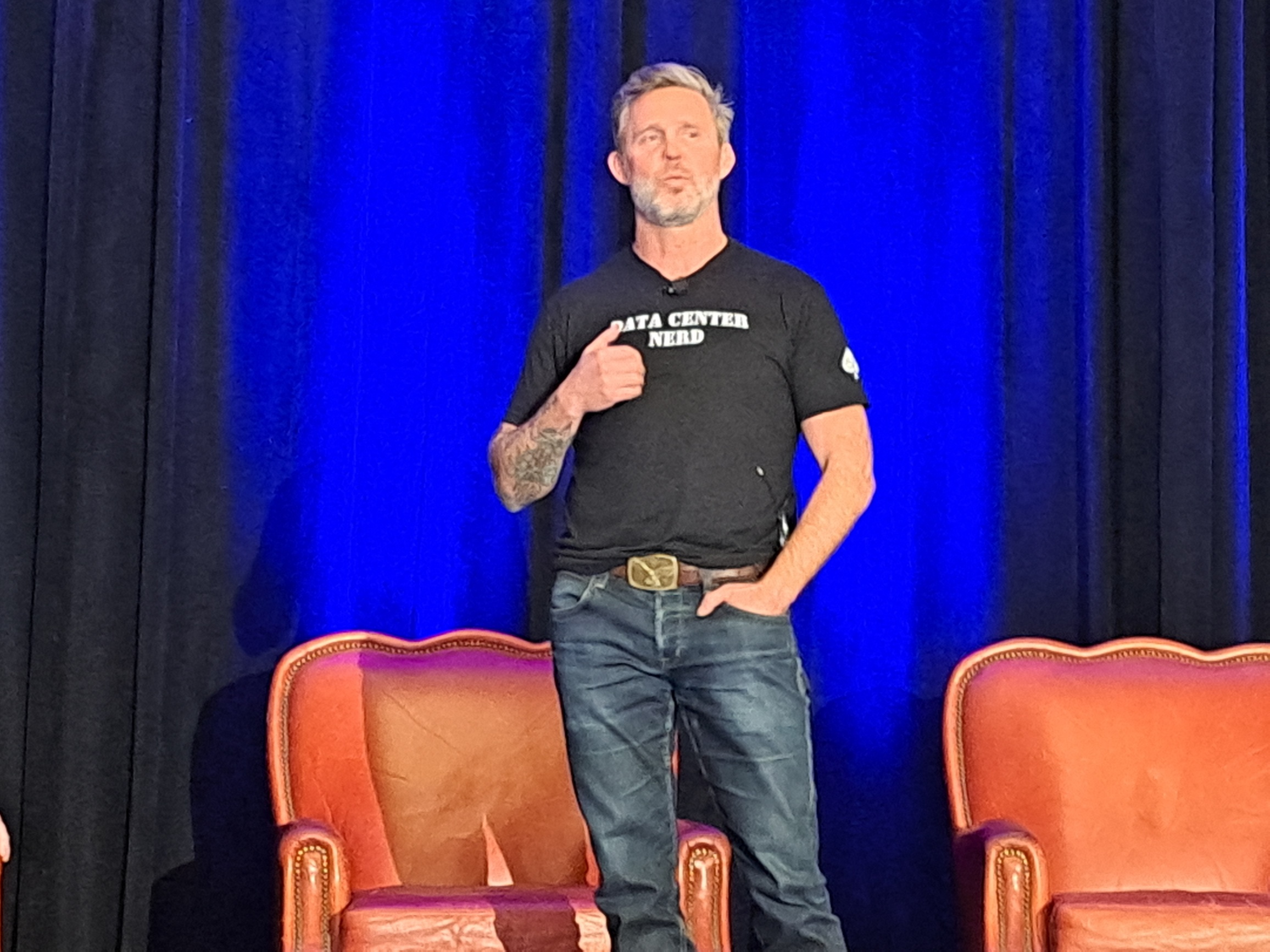
Kirk Offel of Overwatch Mission Critical talks about how AI and cloud computing are expanding the need for data centers.
A panel discussion “AI: Adapt or Get Left Behind,” moderated by Jennie Fisher of GreatAmerica Financial Services, panelists Cindy Bradley of GreatAmerica, Keven Ellison of AIS, and Gary Lavin of CEO Juice explored how businesses are leveraging AI to drive efficiency and innovation. Bradley highlighted AI’s role in digital transformation and productivity enhancements, noting that tools like Microsoft CoPilot significantly improve software engineering workflows. Ellison emphasized the growing importance of generative AI, distinguishing it from traditional AI and sharing examples of its impact on content creation, automation, and sales processes.
A key theme of the discussion was the barriers to AI adoption, including lack of understanding, governance challenges, and staff resistance. Ellison shared insights on overcoming employee skepticism through education and hands-on immersion in AI tools. Lavin reinforced the need for businesses to distinguish between automation and true AI to maximize its benefits.
The panelists agreed that AI adoption must be driven top-down, with leadership guiding organizations through the transition. Looking ahead, they predicted that AI would revolutionize business processes, particularly in sales automation and outbound engagement, and they urged businesses to embrace AI now to remain competitive.
Making an Impact
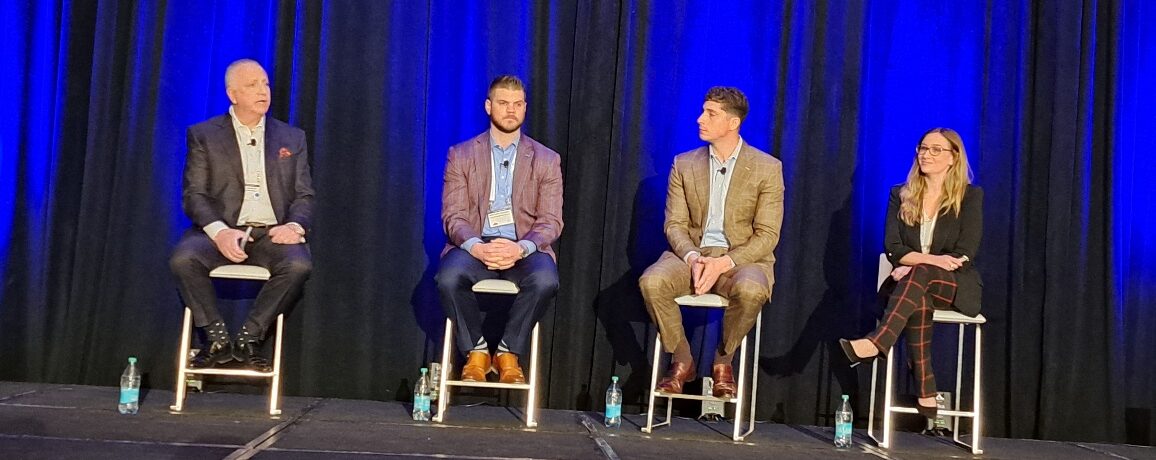
Frank Cucco and his executive team from Impact Networking, Mike Lepper, Anthony Cucco, and Ashley Carnes.
One of last year’s Executive Connection Summit highlights was a presentation by Frank Cucco and his team from Impact Networking in Chicago. Much of that presentation focused on Cucco’s career in the industry—a fascinating story. I used much of the content from Cucco’s story in my February 2024 CR-Connect Dealer Tour profile of the dealership.
This year, Cucco was joined by his new senior leadership team, including Mike Lepper, Anthony Cucco, and Ashley Carnes, who discussed the dealership’s vision for growth, much of it centered around services such as managed IT as it seeks to become a one-billion-dollar company within the next 10 years. What was most impressive to me was that Cucco, who has been in the industry for 40+ years, has the foresight and confidence to turn the company’s future over to a new generation to implement this vision.
Pitching Diversification at The Executive Connection Summit
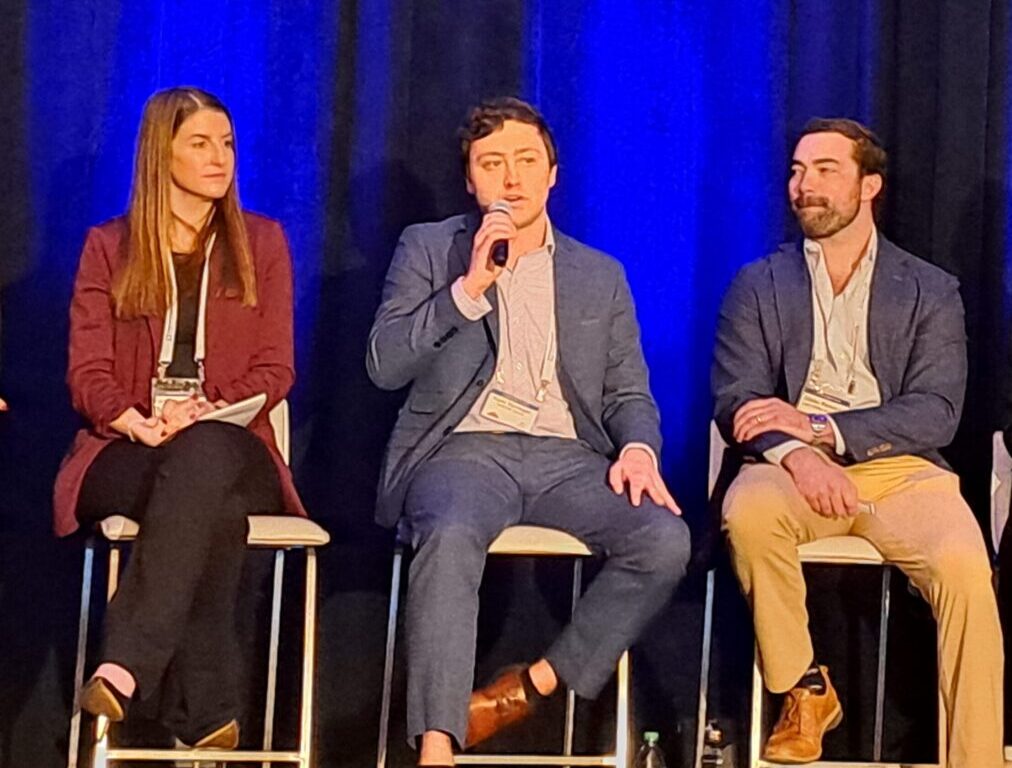
Left to right, Blue Technologies’ Lauren Hanna-Masuga listens as Brice Renegar and his Brother Blake of Kelly Office Solutions, tout cybersecurity as a diversification opportunity.
My favorite session during the Executive Connection Summit featured six next-generation leaders discussing diversification. The format, modeled after the reality TV show Shark Tank, was entertaining and informative. The diversification opportunities discussed included managed IT, cybersecurity, water systems, and production print. Each panelist made a strong case for diversifying into one of the aforementioned products or service areas.
Panelists included Korey and Ben Philpot of Precision Duplicating Solutions (water systems), Blake and Brice Renegar of Kelly Office Solutions (cybersecurity), Lauren Hanna-Masuga of Blue Technologies (managed IT services), and Stephanie Keating of Advanced Information Systems (production print).
The Sharks, who queried each panelist about their diversification strategies, included Kate Kingston of Kingston Training Group, Jenna Stramaglio of ConnectWise, Greg Goldberg of BTA, Cameron Fisher of GreatAmerica Financial Services, and Kyle Spriegel of ARCOA Group. The moderator was Laura Blackmer of Konica Minolta. Kudos to Kingston for suggesting the Shark Tank concept for this session.
OEM Presentations
Left to right, Konica Minolta’s Sam Errigo, Sharp’s Mike Marusic, and Toshiba’s Larry White.
The Executive Connection Summit presentations by Konica Minolta’s Errigo, Sharp’s Marusic, and Toshiba’s White were insightful and primarily focused on adapting to evolving market conditions as traditional office clicks decline.
Errigo stressed the need for significant business model changes due to shrinking profits, slower revenue growth, and talent shortages. He highlighted digital transformation and AI as critical, urging companies to implement clear strategies to leverage these technologies. Errigo also discussed AI’s potential to enhance Konica Minolta’s service operations, with a goal within Konica Minolta to increase remote service triage rates from 37% to 70%. He also emphasized investing in IT services and technology to boost efficiency and profitability.
Marusic encouraged dealers to explore AI, advising them to dedicate time daily to educate themselves and understand its capabilities. He underscored the need for diversification to combat industry challenges such as complacency and revenue declines. Some of those areas of opportunity include computers, managed services, Pro AV, and digital signage, noting that dealers who diversified during COVID saw a 12% revenue increase, whereas those who didn’t experienced a 19% decline. He also revealed that Sharp’s focus on adding value through integrated software and support improved profitability for its top-performing branches.
White reaffirmed the enduring value of print, emphasizing its relevance in an $81 billion global market. He noted Toshiba’s growth in the thermal printing sector, which has surged by 166% since 2017, and a 24.5% increase in managed services over the past two years. Equally impressive is how Toshiba’s software services and professional services business has grown 74% in the last three years post-COVID-19. AI also plays a key role in Toshiba’s success, improving service call prediction accuracy to 70% and boosting sales and marketing efficiency by 41% and 75%, respectively.
OEM Panel
On the last day of the conference, an OEM panel, including Marusic, White, Karl Boissoneault of Xerox, and Laura Blackmer of Konica Minolta, on what to expect in 2025, as well as commentary on industry consolidation, tariffs, AI, and shifting purchasing behaviors.
Boissoneault emphasized the industry’s pursuit of stability after years of disruption, noting the challenges in planning amid uncertainty and the ongoing search for synergies. Blackmer shared optimism, suggesting that the industry is settling despite lingering challenges. She expects to see some dramatic announcements in 2025, although she believes those will be smaller and more targeted. Blackmer also expects an upcoming surge in demand in the computer industry driven by the replacement cycle of laptops purchased during COVID-19, which could drive opportunities across IT services, phone systems, and print.
White expressed concerns surrounding tariffs and their potential impact on manufacturing locations and pricing. He also stressed the importance of diversification and operational efficiency while downplaying the likelihood of drastic changes in the office technology industry in the short term. Marusic also echoed concerns about tariffs, pointing to potential realignments in factory operations based on evolving trade policies.
The panel also touched on the growing trend of online product availability, particularly with Kyocera hardware now accessible online. White observed that customers increasingly research purchases online, relying on AI-driven insights. Marusic expressed confidence that AI-driven research will play a more significant role in customer purchasing decisions but affirmed that complex products like A3 devices still require dealer expertise for installation and support.
Constructive Criticism
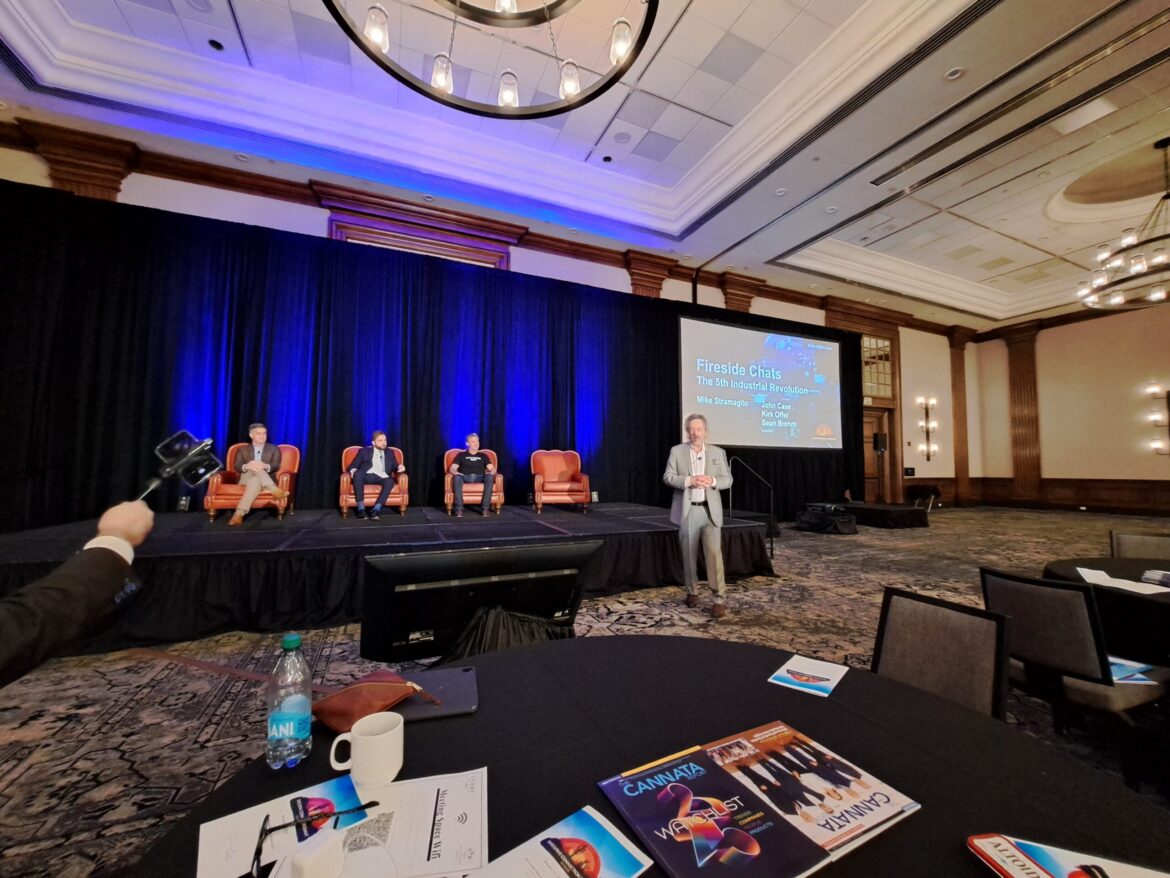
Mike Stramaglio moderates a Fireside Chat featuring John Case of Acumatica, Sean Brehm of Spectral Capital, and Kirk Offel of Overwatch Mission Critical.
Overall, Mike Stramaglio and Hiro Ueda of Stramaglio Consulting and members of The Consortium involved in the planning of the Executive Connection Summit did an excellent job assembling this year’s program. It’s impossible to minimize the value of a forum for all corners of the office technology industry, from dealers to OEMs to services and solutions providers. Any conference succeeds if one walks away with knowledge, new contacts, and action items. The Executive Connection Summit certainly succeeded in that regard, at least for me.
If I could change anything about the Executive Connection Summit going forward, it would be less reliance on the usual suspects in some of the presentations. Fewer presentations that come across as commercials would also be a plus. The Executive Connection Summit may not always be perfect from start to finish, but it is the place to be in January, and those who attend leave better prepared for the future than those who stay home.

